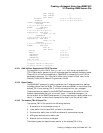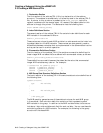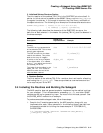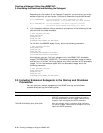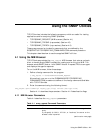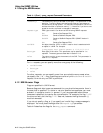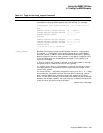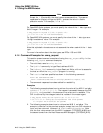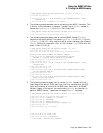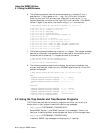
4
Using the SNMP Utilities
TCP/IP Services includes the following programs, which are useful for testing
applications and for analyzing SNMP problems:
• TCPIP$SNMP_REQUEST (MIB browser) (Section 4.1)
• TCPIP$SNMP_TRPSND (trap sender) (Section 4.2)
• TCPIP$SNMP_TRPRCV (trap receiver) (Section 4.2)
These programs can be invoked by commands that are defined by the
SYS$STARTUP:TCPIP$DEFINE_COMMANDS.COM command procedure.
This chapter describes how to use the supplied SNMP utilities.
4.1 Using the MIB Browser
TCP/IP Services provides the
snmp_request
MIB browser that acts as a simple
client to handle single SNMP requests for reading and writing to a MIB. The
browser sends SNMP Version 1 and SNMP Version 2 request PDUs to an agent
and displays the agent’s response.
To run the MIB browser, follow these steps:
1. Define a foreign command for the program:
$ snmp_request == "$SYS$SYSTEM:TCPIP$SNMP_REQUEST"
Alternatively, you can run the SYS$MANAGER:TCPIP$DEFINE_
COMMANDS.COM procedure to define all the foreign commands available
with TCP/IP Services.
2. Enter the command using the following format.
snmp_request agent "community" request_type [flags] variable [data-type value]
Section 4.1.1 describes the parameters. Section 4.1.2 describes the flags.
4.1.1 MIB Browser Parameters
Table 4–1 describes the
snmp_request
parameters.
Table 4–1 snmp_request Command Parameters
Parameter Function
agent
The host name or IP address (in dot notation) of the managed node to
query.
If you specify 0, 0.0.0.0., 127.0.0.1, or ‘‘localhost,’’ the server on the
browser’s host is queried.
(continued on next page)
Using the SNMP Utilities 4–1



